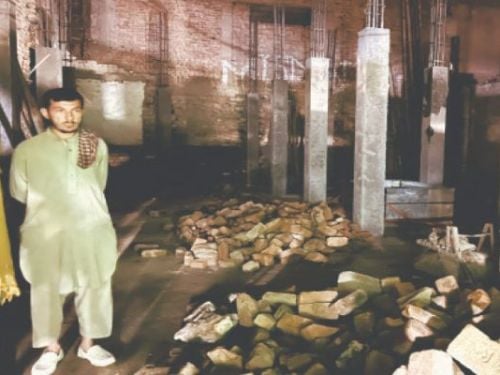Mumbai: The Sethusamudaram Canal Project (SCP), which was to become operational by end-2008 before controversy hit it, is expected to reduce the sailing distances of ships plying between Kolkata and Tuticorin by 340 nautical miles (nm). Similarly the Chennai-Tuticorin route would be reduced by 434 nm. It is anticipated that approximately 3417 ships would use it by 2010 and this would rise to some 7141 ships by 2025. Also the resultant revenue earned by way of toll pilotage charges is expected to not only help repay the cost of the project, but also earn profits from the first year of operations. Incidentally, Indian coastal shipping comprises 530 ships, contributes 10 per cent of sea-borne trade and will handle 101 mt cargo in 2007. This is expected to double in the next five years.
However, the project has its downside. Retired Indian navy captain, H.H. Balakrishnan, has kindly permitted me to summarise his mathematical cost-benefit analysis vis-a-vis SCP. According to my summary, ships of 7 to 10.7 m draught would have to move in SCP at low speeds of 6 knots (kts), increasing sailing time, as against their normal open water speeds of 12 to 15 kts, due to "shallow water and squatting" effects. Also merchant ships use cheaper furnace fuel oil for open ocean sailing and costlier diesel in congested/narrow waters like the SCP for quick manoeuvring.
The mandatory ‘canal toll tax’, embarkation and disembarkation of pilots and the use of tugs, would add to costs and a time overrun of two to four hours. The shortage of trained pilots increases waiting time. A ship sailing the Kolkata-SCP-Tuticorin route at 12 kts or 15 ‘open sea’ speed plus 6 kts in SCP would take practically the same time if it sailed around Sri Lanka. Similar calculations for Chennai-SCP-Tuticorin show that going around Sri Lanka would take 20 (15 kts) to 30 hours (12 kts) more. However, in both cases every trip around Sri Lanka would result in a saving of Rs13 lakh (Chennai-Tuticorin) to Rs19 lakh (Kolkatta-Tuticorin) rupees.
Repaying the SCP capital investment cost at 10 per cent per annum interest over 25 years, would need approximately Rs 203 crore per year. It is expected that 3417 ships will use SCP in 2010 and 7141 in 2025. Considering the annual coal requirement of the 1050 MW Tuticorin Thermal Power Plant, only 215 ships of 30,000 DWT are needed. In addition another 200 ships would bring petroleum products. The total number of ships annually is not likely to exceed a thousand in any case. This number can increase if the Tuticorin Port develops dramatically.
As of now, the expected shipping may not amortise the cost of SCP (including maintenance, regular dredging costs, costs of pilots, tugs, support vessels, communication and radar infrastructure), leave alone earn profits. Who then will use the SCP, even if we ‘overlook’ the LTTE Sea Tiger threat next door, the ever-present problem of cyclones (between 1891-2001, according to the Met Department, 64 cyclones crossed the TN coast, with 23 crossing the SSCP area), piracy, smuggling, marine pollution, fights over fishing rights, gun and drug running mafia operations, tsunami and so on?
There are some benefits too that need to be considered. For one, the Indian Navy and Coast Guard would be quickly able to deploy/redeploy some of their assets (ie, low draught ships of 100 to 3,000 tonnes) from one coast to the other or from the Palk Bay to the Gulf of Mannar and vice versa. Embarking pilots is not mandatory for these ships. Also, it would facilitate the movement of genuine low draught coastal ships, OSVs & MSVs of 1000-2000 tonnes, which provide logistic support to oil rigs off both the coasts; and mechanised fishing trawlers could change coasts and fishing grounds relatively faster.
There is also the security angle to be considered. Once the SCP becomes operational, policing it would require a major increase in the Indian Coast Guard, Customs and Marine Police assets in Rameshwaram and Tuticorin. Keeping in mind the proximity of Tuticorin to the Palk Bay due to the SCP, the Indian navy too may have to consider permanently basing some assets in Tuticorin for more intensive surveillance, and protection to future oil exploration rigs, and ensure a quick response to threats from the LTTE. It would require close co-ordination and timely intelligence sharing between all these agencies.
The writer is a retired vice-admiral
Source: news.yahoo.com

 Rajasthan: Woman found hanging at a beauty parlour, Arshad, 3 others booked
Rajasthan: Woman found hanging at a beauty parlour, Arshad, 3 others booked Jadavpur Univ revokes permission to celebrate Ram Navami on campus after granting it
Jadavpur Univ revokes permission to celebrate Ram Navami on campus after granting it Andhra Pradesh: Farooq kills mentally challenged Hindu man for insurance money
Andhra Pradesh: Farooq kills mentally challenged Hindu man for insurance money Pakistan: Ancient Hindu temple in Khyber Pakhtunkhwa demolished for commercial complex
Pakistan: Ancient Hindu temple in Khyber Pakhtunkhwa demolished for commercial complex Bihar: Goddess Bhagavati Temple in Araria vandalised and deities damaged
Bihar: Goddess Bhagavati Temple in Araria vandalised and deities damaged Vadodara: Beef supplier Imran Qureshi arrested in beef-stuffed samosa case
Vadodara: Beef supplier Imran Qureshi arrested in beef-stuffed samosa case